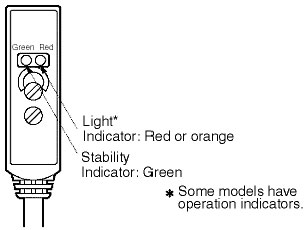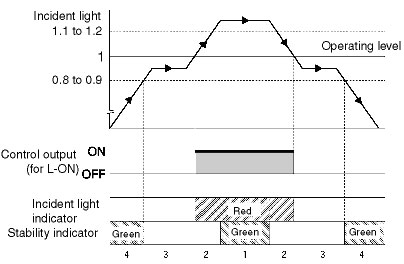How do the indicators on Photoelectric Sensors operate?
There is a stability indicator (green) and an incident light indicator (red). There are four operation patterns depending on the amount of incident light.
Explanation:
The stability indicator shows the excess gain for temperature, voltage, dust, or other changes in the environment after installation.
Incident Light Indicator
The incident light indicator shows the amount of light entering the receiver.

Indicator operation

Note: The operating level is 1.
The following figure shows indicator operation on a graph.
